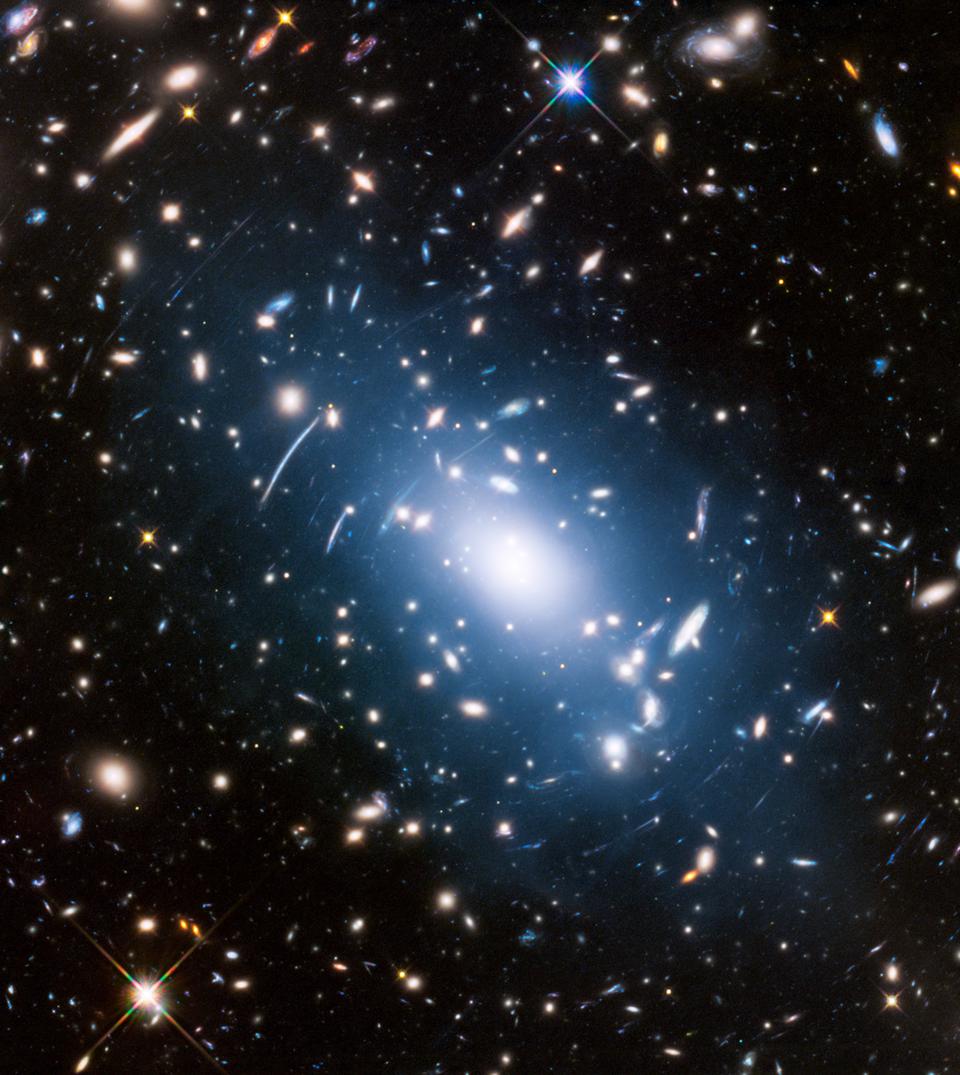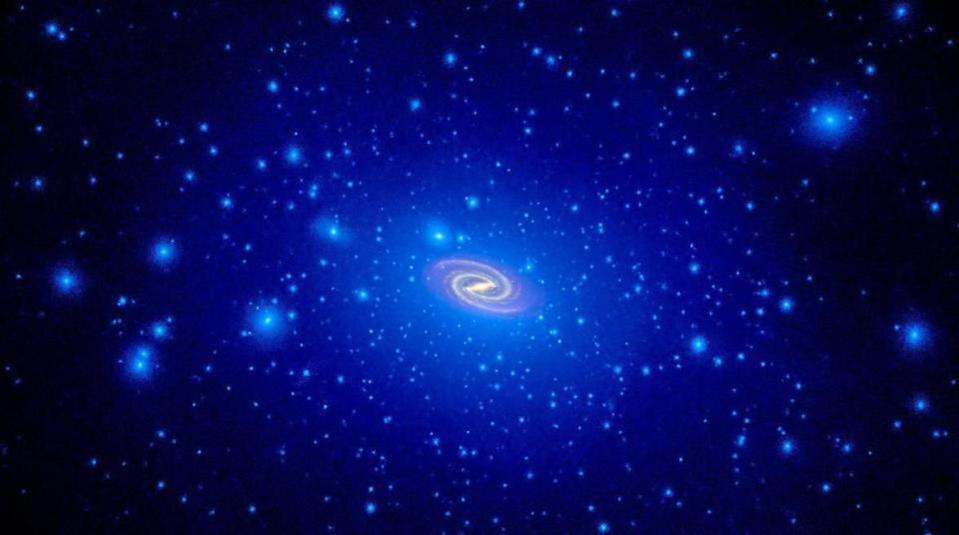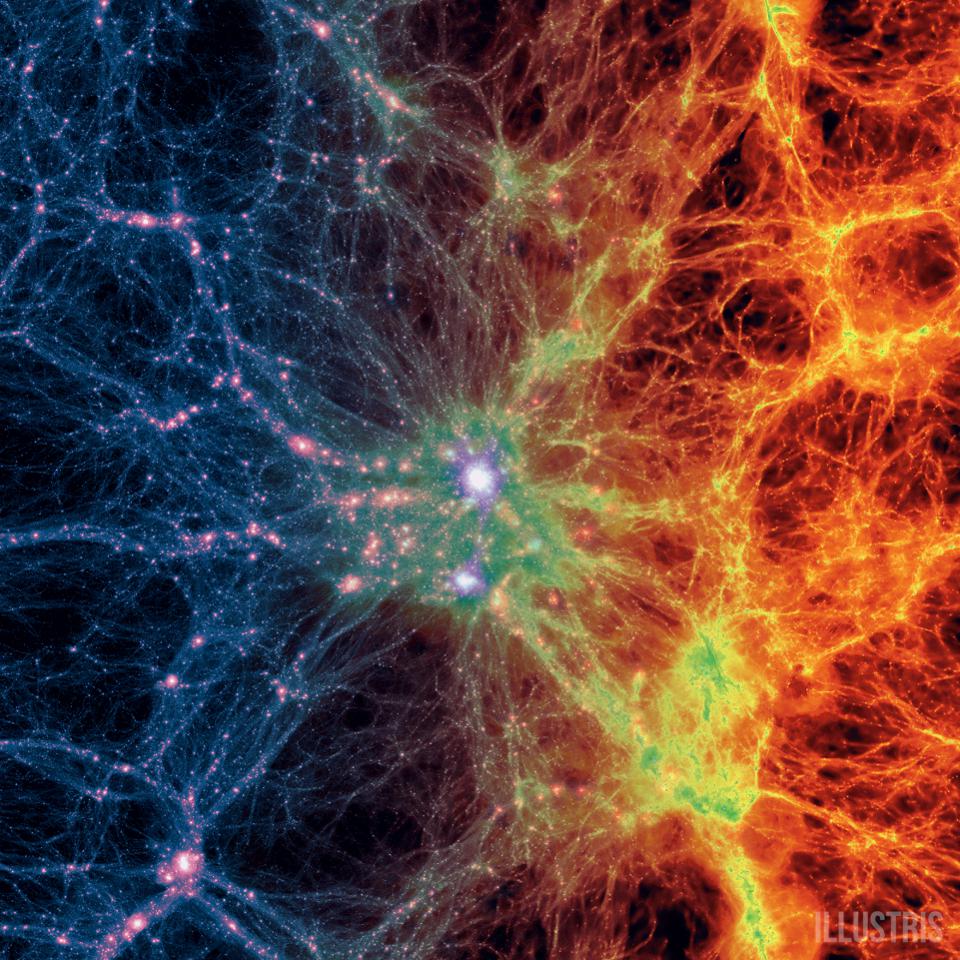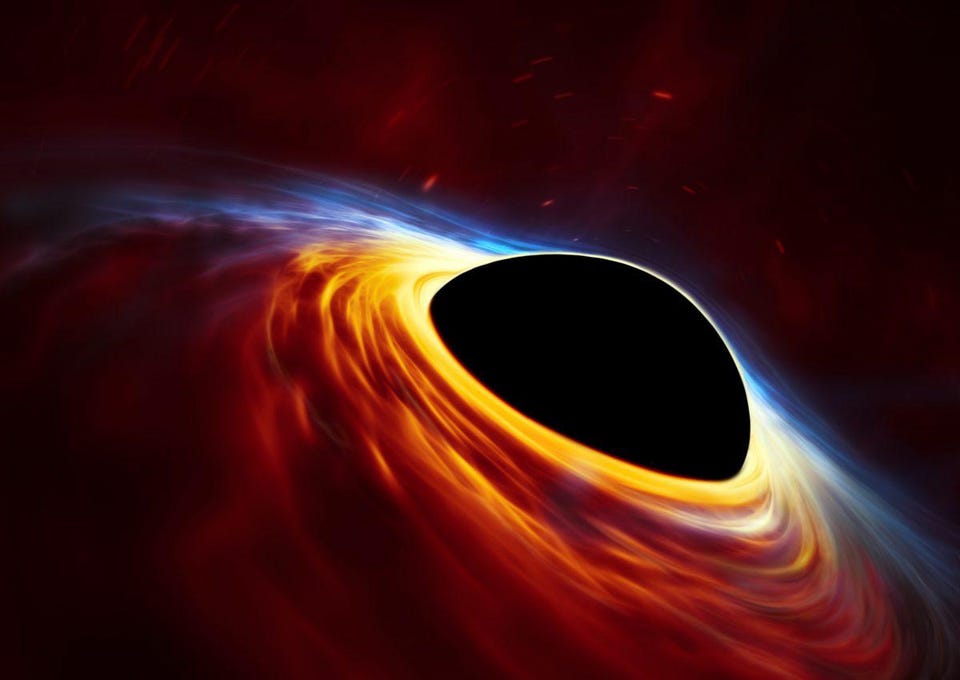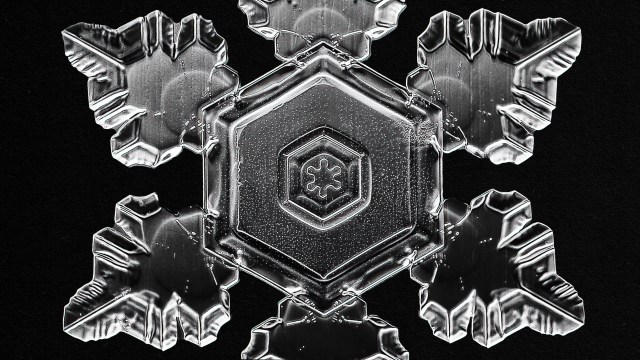Could dark matter be made of gravitons?
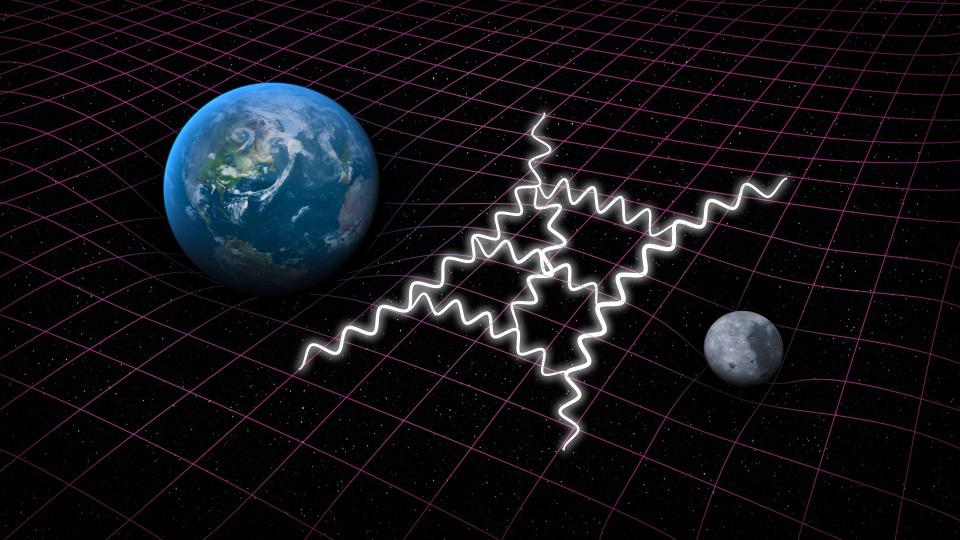
- Dark matter, astrophysically, is the gravitational “glue” that holds the overwhelming majority of large structures in the Universe together.
- However, despite the fact that every massive galaxy and group/cluster of galaxies is embedded in a dark matter halo, the particle(s) responsible for it have never been directly detected.
- Could the graviton, the hypothetical particle that mediates the gravitational force, be the ultimate culprit behind this mystery? It’s a fascinating possibility.
One of the most puzzling observations about the Universe is that there isn’t enough matter — at least, matter that we know of — to explain how we see things are gravitating. On Solar System scales, General Relativity and the masses we observe do the job just fine. But on larger scales, the internal motions of individual galaxies indicate the presence of more mass than we observe. Galaxies in clusters move around too quickly, while X-rays reveal an insufficient amount of normal matter. Even on cosmic scales, extra mass has to be present to explain gravitational lensing, the cosmic web, and the imperfections in the Big Bang’s leftover glow.
While we typically invoke a new particle of some type, one intriguing idea is purely gravitational: could dark matter be made of gravitons alone? After all, the other known forces in the Universe — the electromagnetic force, the strong nuclear force, and the weak nuclear force — are all inherently quantum in nature, and those forces are mediated by particles that we’ve detected. Although we aren’t sure whether gravitation truly is inherently quantum, and we’ve never directly detected the hypothetical graviton, perhaps it would make sense if the force-carrying particle of gravitation, itself, were responsible for what we perceive as dark matter.
So could dark matter be gravitons? Could gravitons conceivably make up at least some, and possibly all, of the dark matter? Let’s find out.

The first thing we have to consider is, astrophysically, what we already know about the Universe. After all, it’s only by observing the Universe itself that we get all of the information we presently know about dark matter. Dark matter must be:
- clumpy, which tells us that it needs to have a non-zero rest mass,
- collisionless, in the sense that it cannot collide (very much, if at all) with either normal matter or photons,
- minimally self-interacting, which is to say there are rather tight restrictions on how significantly dark matter can collide and interact with other dark matter particles,
- and cold, meaning that — even at early times in the Universe — this material needs to be moving at slow speeds compared to the speed of light.
Furthermore, when we look at the Standard Model of elementary particles, we find, quite definitively, that there are no particles that are already known to exist that would make a good dark matter candidate, or that could account for any substantial fraction of the Universe’s “missing” dark matter.
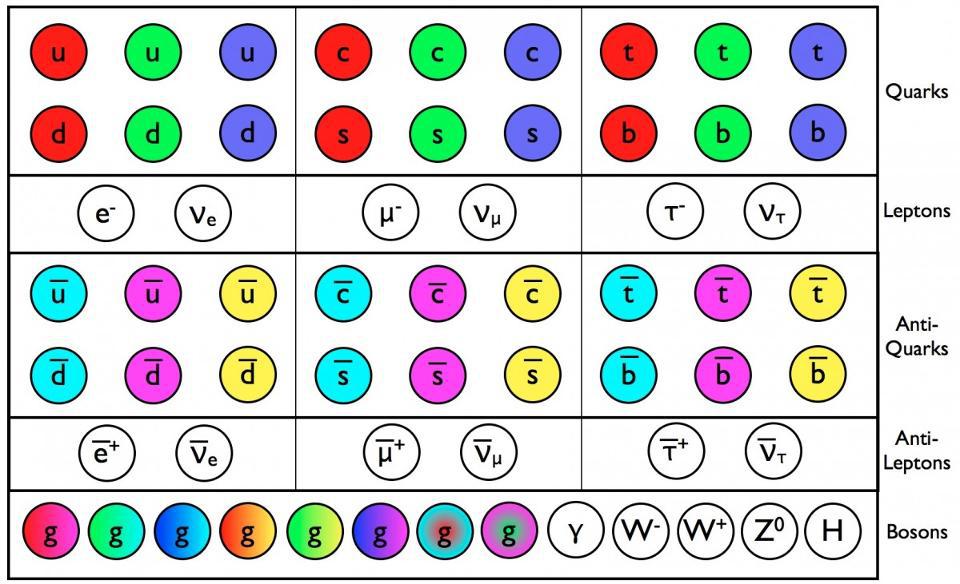
Any particle with an electric charge is eliminated, as are the unstable ones that would decay. Neutrinos are too light; they were born hot and would represent a very different type of dark matter than we have, plus, based on our cosmic measurements, they can only make up about ~1% of the dark matter, at most. Composite particles, like the neutron, would clump and cluster together, shedding momentum and angular momentum too significantly; they’re too “self-interacting.” And the other neutral particles, like gluons, would also couple too strongly to the other normal stuff out there; they’re too “collisional.”
Whatever it is that dark matter is made of, it isn’t any of the particles that we know of. Without those constraints — since the null hypothesis is pretty definitively ruled out — we’re free to speculate about what dark matter might be. And while it’s certainly not the most popular option among theoretical physicists, with WIMP-like and axion-like particles being more commonly considered, there’s not necessarily a correlation between popularity among theorists and what the Universe is actually doing. As it turns out, there are plenty of reasons why one might want to consider the graviton.

Reason #1: gravity exists, and is very likely quantum in nature. Unlike many of the dark matter candidates that are more commonly talked about, there is far less speculation associated with the graviton than almost any other idea in beyond-the-Standard-Model physics. In fact, if gravity, like the other known forces, turns out to be inherently quantum in nature, then the existence of a graviton is required. This stands in contrast to many other options, including:
- the lightest supersymmetric particle, which would require supersymmetry to exist despite the mountain of evidence that it does not,
- the lightest Kaluza-Klein particle, which would require extra dimensions to exist, despite a complete lack of evidence for them,
- a sterile neutrino, which would require additional physics in the neutrino sector and is highly constrained by cosmological observations,
- or an axion, which would require the existence of at least one new type of fundamental field,
among many other candidates. The only assumption we need, in order to have gravitons in the Universe, is that gravity is inherently quantum, rather than being described by Einstein’s classical theory of General Relativity on all scales.
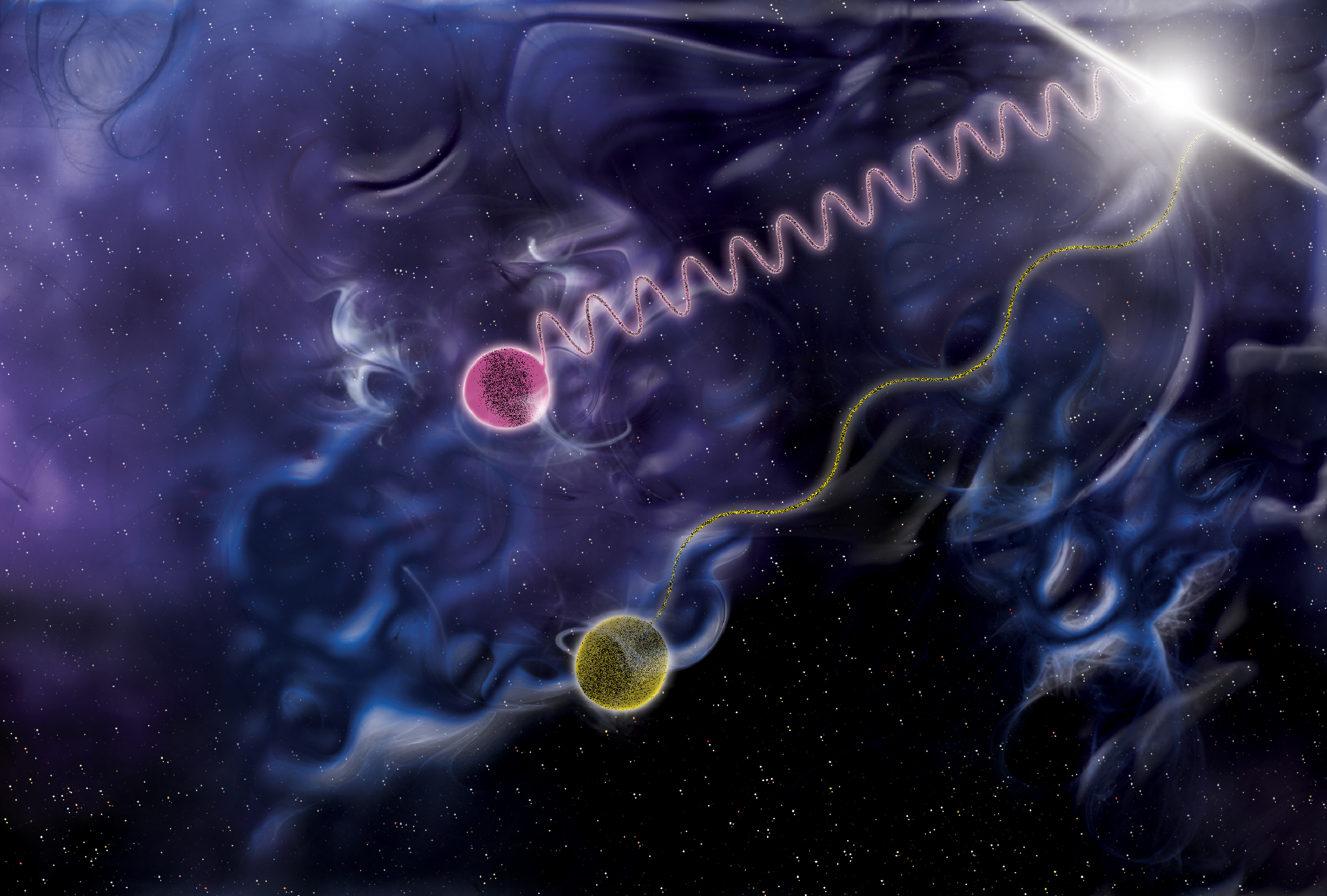
Reason #2: gravitons aren’t necessarily massless. In our Universe, you can only clump together and form a bound structure, gravitationally, if you have a non-zero rest mass. In theory, a graviton would be a massless, spin-2 particle that mediates the gravitational force. Observationally, from the arrival of gravitational waves (which themselves, if gravity is quantum, should be made of energetic gravitons), we have very strong constraints on how massive a graviton is allowed to be: if it has a rest mass, it has to be lower than about ~10-55 grams.
But as tiny as that number is, it’s only consistent with the massless solution; it doesn’t mandate that the graviton is massless. In fact, if there are quantum couplings to certain other particles, it may turn out that the graviton itself has a rest mass, and if that’s the case, they can clump and cluster together. In large enough numbers, they could even make up part or all of the dark matter in the Universe. Remember: massive, collisionless, minimally self-interacting, and cold are the astrophysical criteria we have on dark matter, so if gravitons are massive — and while we don’t expect them to be, they could be — they could be a novel dark matter candidate.
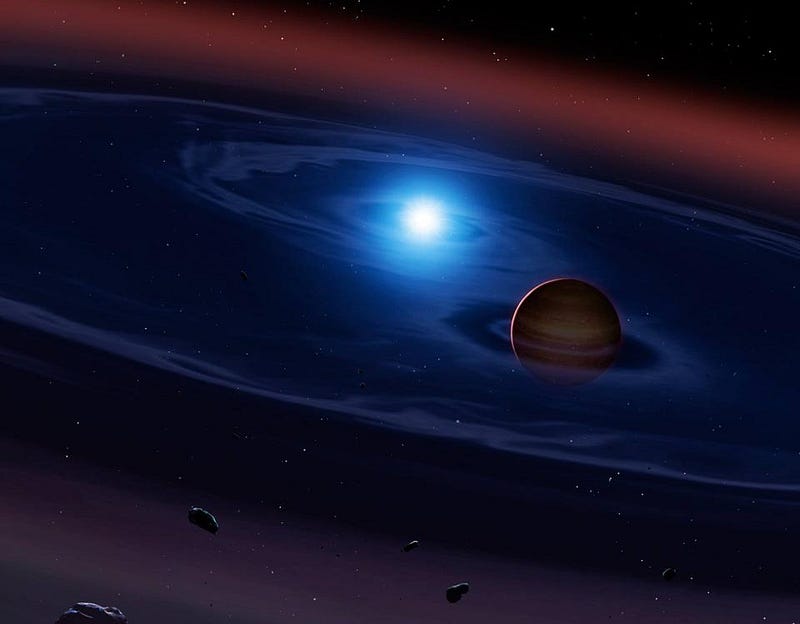
Reason #3: gravitons are already extremely collisionless. In physics, any time you have two quanta that occupy the same space at the same time, there’s a chance that they’ll interact. If there is an interaction, the two objects can exchange momentum and/or energy; they might fly off again, stick together, annihilate, or spontaneously create new particle-antiparticle pairs if enough energy is present. Regardless of which type of interaction occurs, the cumulative probability of everything that can occur is described by one important physical property: a scattering cross-section.
If your cross-section is 0, you’re considered non-interacting, or completely collisionless. If gravitons obey the physics we expect them to obey, we can actually compute the cross-section: it is non-zero, but detecting even one graviton is exceedingly unlikely. As a 2006 study demonstrated, a Jupiter-mass planet in tight orbit around a neutron star would interact with approximately one graviton per decade, which is collisionless enough to fit the bill to describe dark matter. (Its cross-section with photons is comparably laughable in how minuscule it is.) So, on this front, gravitons have no problem as a dark matter candidate.

Reason #4: gravitons have extraordinarily low self-interactions. One of the questions I commonly get asked is whether it’s possible to surf gravitational waves, or whether, if two gravitational waves collided, they’d interact like water waves “splashing” together. The answer to the first one is “no” and the second one is “yes,” but barely: gravitational waves — and hence, gravitons — do interact in this way, but the interaction is so small that it’s completely imperceptible.
The way we quantify gravitational waves is through their strain amplitude, or the amount that a passing gravitational wave will cause space itself to “ripple” when things pass through it. When two gravitational waves interact, the main portion of each wave just gets superimposed atop the other one, while the portion that does anything other than pass through one another is proportional to the strain amplitude of each one multiplied together. Given that strain amplitudes are typically things like ~10-20 or smaller, which itself requires a tremendous effort to detect, going 20+ orders of magnitude more sensitive is virtually unimaginable with the limitations of current technology. Whatever else might be true about gravitons, their self-interactions can be disregarded.
But some of the properties of gravitons pose a challenge for them to be a viable dark matter candidate. In fact, there are two major difficulties that gravitons face, and why they’re rarely considered as compelling options.

Difficulty #1: it’s very difficult to generate “cold” gravitons. In our Universe, any particles that exist will have a certain amount of kinetic energy, and that energy determines how quickly they move through the Universe. As the Universe expands and these particles travel through space, one of two things will happen:
- either the particle will lose energy as its wavelength stretches with the expansion of the Universe, which occurs for massless particles,
- or the particle will lose energy as the distance it can travel in a given amount of time decreases, due to the ever-growing distances between two points, if it’s a massive particle.
At some point, regardless of how it was born, all massive particles will eventually move slowly compared to the speed of light: becoming non-relativistic and cold.
The only way to accomplish this, for a particle with such a low mass (like a massive graviton would have), is to have it be “born cold,” where something occurs to create them with a negligible amount of kinetic energy, despite having a mass that must be lower than ~10-55 grams. The transition that created them, therefore, must be limited by the Heisenberg uncertainty principle: if their creation time occurs over an interval that’s smaller than about ~10 seconds, the associated energy uncertainty will be too large for them, and they’ll be relativistic after all.
Somehow — perhaps with similarities to the theoretical generation of the axion — they need to be created with an extremely small amount of kinetic energy, and that creation needs to occur over a relatively long amount of time in the cosmos (compared to the tiny fraction-of-a-second timespan for most such events). It’s not necessarily a dealbreaker, but it’s a difficult obstacle to overcome, requiring a set of new physics that isn’t easy to justify.

Difficulty #2: despite our theoretical hopes, gravitons (and photons, and gluons) are all probably massless. Until something’s been experimentally or observationally established, it’s particularly difficult to rule out alternatives to the leading idea of how it ought to behave. With gravitons — as with photons and gluons, the only other truly massless particles we know of — we can only place constraints on how massive they’re allowed to be. We have upper limits of varying tightness, but have no way to constrain it all the way to “zero.”
What we can note, however, is that if any of these theoretically massless particles do have a non-zero rest mass, we’d have to reckon with a number of uncomfortable facts.
- Gravity and electromagnetism, if (respectively) the graviton or photon are indeed massive, will no longer be infinite-range forces.
- If the force-carrying particle is massive, then gravitational waves and/or light wouldn’t travel at c, the speed of light in a vacuum, but rather a slower speed that we’ve simply failed to measure thus far.
- And you get a theory other than General Relativity in the limit that you take the graviton’s mass to zero, a pathology that requires a number of arguably more uncomfortable assumptions to eliminate. (In particular, they do not allow the Universe to be flat, which we observe; only open, and that itself contains instabilities which might be dealbreakers.)
While the idea of massive gravity has gotten a lot of interest over the past decade, including from recent progress spurred largely from the research of Claudia de Rham, it remains a highly speculative idea that may not be workable within the framework of what’s already been established about our Universe.

What’s remarkable is that we no longer ask questions like, “Why couldn’t dark matter be gravitons?” Instead, we ask, “If we wanted the dark matter to be gravitons, what properties would it need to have?” The answer, like all dark matter candidates, is that it has to be cold, collisionless, with highly restricted self-interactions, and massive. While gravitons certainly fit the bill of being collisionless and barely self-interacting at all, they’re generally assumed to be massless, not massive, and even if they were massive, generating cold versions of gravitons is something we still don’t know how to do.
But that isn’t enough to rule these scenarios out. All we can do is measure the Universe at the level we’re capable of measuring it, and to draw responsible conclusions: conclusions that don’t exceed the reach of our experimental and observational limits. We can constrain the mass of the graviton and uncover the consequences of what would occur if it did have a mass, but until we actually uncover the true nature of dark matter, we have to keep our minds open to all possibilities that haven’t definitively been excluded. Although I wouldn’t bet on it, we cannot yet eliminate the possibility that gravitons that were born cold are themselves responsible for dark matter, and make up the missing 27% of the Universe we’ve long been searching for. Until we know what dark matter’s true nature is, we need to explore every possibility, no matter how implausible.
